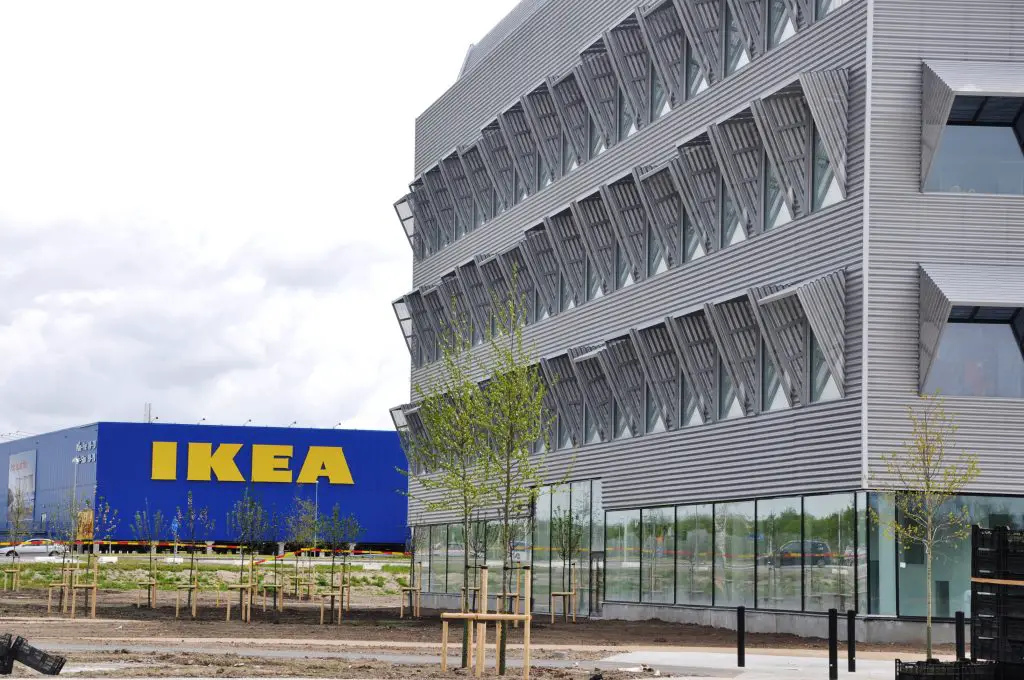IKEA Mission and Vision Statements Analysis

IKEA mission statement can be taken “ to be offering a wide range of well designed, functional home furnishing products at prices so low that as many people as possible will be able to afford them.” This is not the official mission statement for the company. However, it is consistent with the definition of the corporate mission statement as it describes how IKEA seeks to make its vision a reality. In this case, the company makes it clear that it looks to offer its customers the best products at the most competitive prices in the market. The implied mission statement for IKEA has the following components:
- Distinguished products
- Affordable prices
- Exceeding expectations
The most common aspect inseparable to the reputation of IKEA is that its products are comparable to none other in the market. Over the decades, IKEA has learned the art of designing impressive furniture and related products. The integration of sophisticated technology into its plants gives it an edge over other competitors.
For instance, the company lists a wide range of choices a customer can make to revamp their homes ranging from rugs, home products for baby and kids, kitchen makeovers, and bathroom appliances. This is topped by the customer services tailored to the individual needs of every customer.
The second component in this mission statement emphasizes on the pricing strategy of IKEA. To ensure that the company serves all the customers irrespective of their social status, it goes for the most affordable quotations of all its items. Rather than prioritizing huge profit margins, it is obvious that IKEA values the economies of scale. This proves why this company has expanded so fast into other global regions including Germany and U. K.
There is no limit to what IKEA does to make its customers feel appreciated as shown by the last component in the mission statement. For instance, this company never runs out of discounts for its customers.
Introduction
IKEA has a reputation as one of the few globally reliable designers and marketers of ready to assemble home accessories. The company has been in existence since 1943 and has constantly been diversifying the type of products that it offers its customers, while at the same time expanding further into different territories. The success of IKEA for all these decades comes down to the specificity and practicality of its mission and vision statements. Their emphasis on satisfying the needs of its customers through better services is one of the aspects that has seen this corporation stimulate loyalty among its client base.
The influence of both the mission and vision statements to the position that IKEA holds today in the furniture industry shows how critical they are. A corporate vision statement describes the future that a company wants to be associated with. It is like a target achievement, while a corporate mission statement identifies the specific approaches that would drive the growth of the company towards the desired vision.
In this case analysis, both the mission and the vision statements of IKEA emphasize on the transformations the company strives to take its customers through with its products and services. The vision statement is even more specific by implying that there is no end to the presence of IKEA in the lives of its customers – the company shows its confident to always be there to meet the furniture needs of its customers. Such a commitment guides the business strategy of IKEA, explaining why this company has been growing rapidly.
The core values of IKEA are also invaluable to its continued performance in this industry. They are responsible for its highly motivated workforce, and therefore, contribute to the achievement of the mission and vision of the firm.
Vision Statement
IKEA vision statement is “to create a better everyday life for the many people.” The single liner statement is an indication of the straightforwardness of this company when it comes to serving its customers in the world. IKEA management applies a marketing and sales system free of complications and misleading ads. The company values and trusts the quality of its products to inform the choices of its customers. The statement comprises of these main components:
- Create a better life always
- Serve everyone
The business approach of IKEA is future-focused. The company has established itself as a reliable brand through its unmatched products. To remain relevant and a darling to its customers, IKEA has aggregated the best designers to ensure that all its products remain up to date with time and needs of its patients. In the world of home accessories such as furniture and related appliances, perfection is a must.
Clients demand well-thought-out and finished products that also agree with the changing times. This is something that IKEA has managed to grasp, helping it grow into one of the most sought-after companies in the industry. Other than this, the company is never short of surprising ideas to keep its customer base on the lookout for what is new in its platform. The presence of variety is what makes it easy for IKEA to serve everyone based on the second component. Moreover, this is enhanced by its pricing strategy.
Core Values
IKEA core values comprise “leading by example, will power and humbleness, differentiation, desire for innovation and creativity, enthusiasm and togetherness, and consciousness for cost.” These are the values that all the IKEA branches across the globe shares. They influence the impressive and practical culture of this organization.
The admiration that IKEA boasts of among its clients are drawn from its humble business operations. This company seconds this by its determination to try out new designs as a show of its passion in what it does. By being change-minded, IKEA has created a culture of innovations and creativity as shown by the wide range of products in all its stores.
The ease with which this company pursues its achievement is also enhanced by the spirit of sharing ideas and executing them together within its plants. Finally, IKEA remains disciplined in the valuation of all the products, making them reasonably priced for any customers to afford.
References
- Analoui, F., & Karami, A. (2002). CEOs and development of the meaningful mission statement. Corporate Governance: The international journal of business in society, 2(3), 13-20.
- Babnik, K., Breznik, K., Dermol, V., & Trunk Širca, N. (2014). The mission statement: organisational culture perspective. Industrial Management & Data Systems, 114(4), 612-627.
- Cady, S. H., Wheeler, J. V., DeWolf, J., & Brodke, M. (2011). Mission, vision, and values: what do they say? Organization Development Journal, 29(1).
- Collins, J. C., & Porras, J. I. (1991). Organizational vision and visionary organizations. California management review, 34(1), 30-52.
- Gummesson, E., Kuusela, H., & Närvänen, E. (2014). Reinventing marketing strategy by recasting supplier/customer roles. Journal of Service Management, 25(2), 228-240.
- IKEA – Home.
- Lucas, J. R. (1998). Anatomy of a vision statement. Management Review, 87(2), 22-27.
- Mullane, J. V. (2002). The mission statement is a strategic tool: when used properly. Management Decision, 40(5), 448-455.
- Müller, W. (1991). Gaining competitive advantage through customer satisfaction. European Management Journal, 9(2), 201-211.
- Pearce II, J. A. (1982). The company mission as a strategic tool. Sloan Management Review (pre-1986), 23(3), 15.
- Quigley, J. V. (1994). Vision: How leaders develop it, share it, and sustain it. Business Horizons, 37(5), 37-42.
- Rajasekar, J. (2013). A comparative analysis of mission statement content and readability. Journal of Management Policy and Practice, 14(6), 131-147.
- Raynor, M. E. (1998). That vision thing: Do we need it? Long-range planning, 31(3), 368-376.



